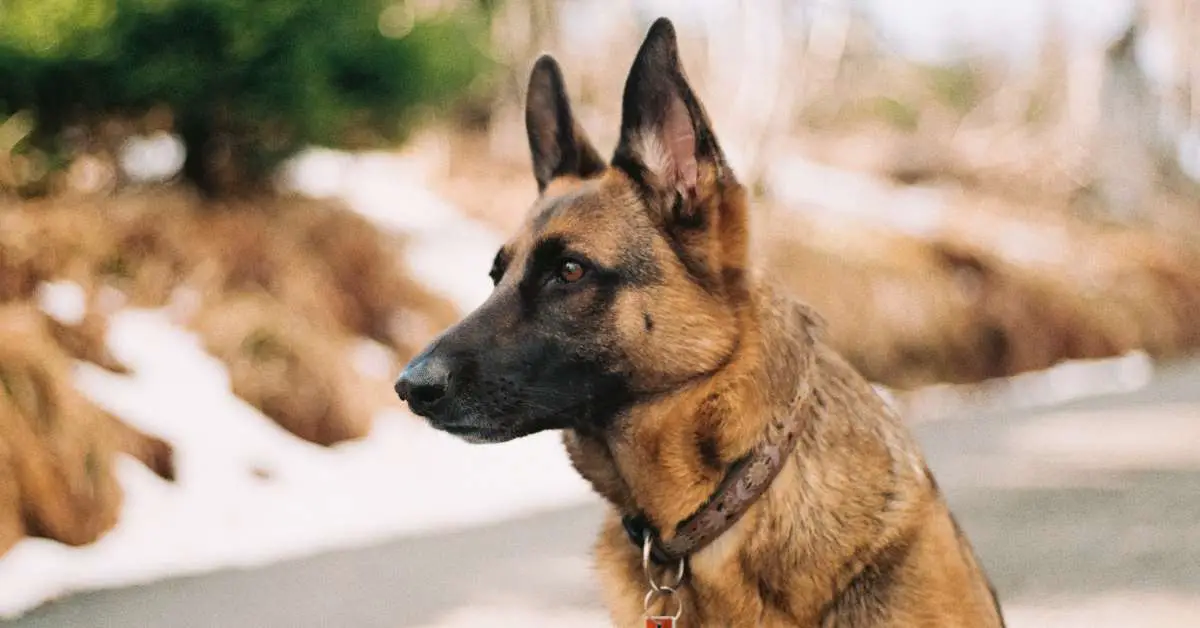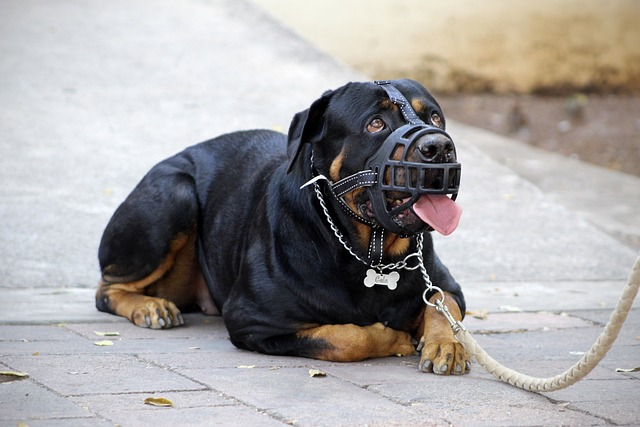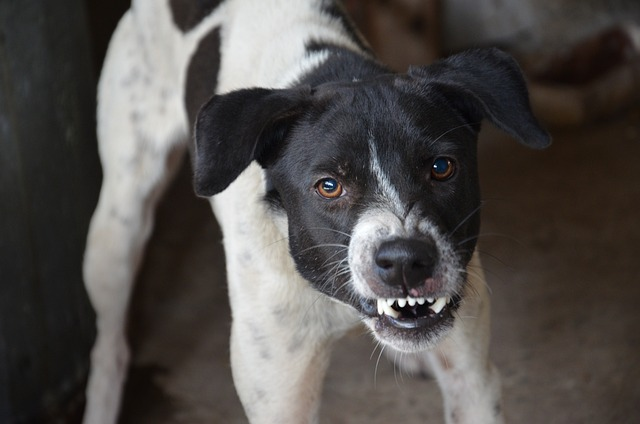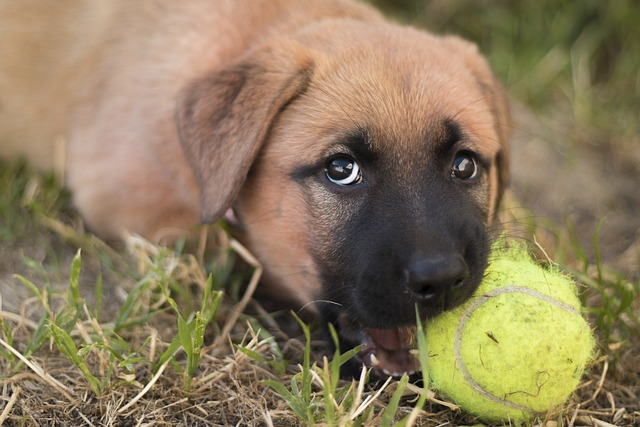My Dog is Aggressive Towards Other Dogs! – Discover Effective Tips on How to Handle and Resolve This Issue!

Welcoming a furry friend into our lives often results in tremendous happiness. Dogs provide unconditional love, allegiance, and companionship.
However, as much as we cherish our four-legged friends, sometimes they exhibit behaviors that can leave us puzzled and concerned. One such behavior is aggression towards other dogs.
If you’ve found yourself grappling with the distressing reality of your dog’s aggressive behavior towards fellow canines, you’re not alone.
Many dog owners have faced similar challenges and sought answers to understand the underlying reasons behind their pet’s aggressive tendencies.
In this blog post, we delve into the complex issue of dog-to-dog aggression and explore the potential causes that may contribute to this behavior.
Understanding the roots of aggression is crucial for owners to address the problem effectively and ensure the well-being of their dog, other dogs, and themselves.
“My Dog is Aggressive Towards Other Dogs” – How to Stop Dog Aggression Towards Other Dogs
If your beloved dog displays aggression towards other dogs, it’s essential to address the issue promptly and effectively.
Understanding the causes of dog-to-dog aggression is the first step, but implementing appropriate training techniques and management strategies is crucial for curbing this behavior.
Here are some practical tips on how to stop dog aggression:
1. Consult a Professional: Seeking guidance from a professional dog trainer or animal behaviorist is highly recommended. They possess the expertise to assess your dog’s behavior, identify triggers, and create a customized training plan.
2. Positive Reinforcement: Reward-based training methods are effective in modifying aggressive behavior. Reward your dog with treats, praise, and affection when they display calm and non-aggressive behavior around other dogs. This positive reinforcement helps them associate positive experiences with other canines.
3. Controlled Socialization: Gradually expose your dog to controlled socialization opportunities with other dogs. Start with calm, well-behaved dogs in a controlled environment. Use positive reinforcement and carefully manage the interaction to ensure a positive experience for your dog.
4. Avoid Punishment: Never resort to punishment or harsh training methods. These can exacerbate aggression and create fear or anxiety in your dog, making the situation worse.
5. Desensitization and Counter-Conditioning: Gradual desensitization and counter-conditioning techniques can be helpful. This involves exposing your dog to triggers at a distance and rewarding them for calm behavior. Over time, gradually decrease the distance between your dog and other dogs, always rewarding positive responses.
6. Leash Training: Ensure your dog is well-trained on a leash. A properly controlled and managed leash can help you maintain distance and control during encounters with other dogs, minimizing the potential for aggressive reactions.
7. Identify Triggers and Avoidance: Pay close attention to the situations, environments, or specific triggers that elicit aggression in your dog. Whenever possible, avoid these triggers and gradually work on desensitizing your dog to them through controlled exposure.
8. Consistency and Patience: Modifying aggressive behavior takes time and consistency. Be patient with your dog’s progress and maintain a consistent approach to training and management techniques.
9. Secure Environment: Ensure your dog’s living environment is secure and free from potential stressors that could trigger aggression. Provide a comfortable space where your dog feels safe and secure.
10. Medical Evaluation: If your dog’s aggression appears sudden or out of character, it’s advisable to have them evaluated by a veterinarian. Underlying medical conditions or pain could contribute to aggressive behavior.

6 Causes of Aggression in Dogs
Understanding the causes of aggression in dogs is essential for addressing and managing this behavior effectively.
Aggression is a complex issue that can stem from various factors, including genetics, socialization experiences, fear or anxiety, resource guarding, territorial instincts, and medical conditions.
Let’s explore these causes in more detail:
1. Genetics
Some dog breeds are more predisposed to aggressive behavior due to their genetic makeup. Breeds that were historically bred for guarding or protection purposes may have a higher tendency towards aggression.
However, it’s important to note that genetics alone do not determine a dog’s behavior, and proper training and socialization can help mitigate aggressive tendencies.
2. Socialization
Insufficient or improper socialization during a dog’s critical developmental period can contribute to aggression.
Dogs that haven’t been exposed to a variety of people, animals, and environments may feel fear or uncertainty in unfamiliar situations, leading to defensive or aggressive responses.
3. Fear or Anxiety
Dogs experiencing fear or anxiety may resort to aggression as a defensive mechanism. Past traumatic experiences, phobias, or a lack of confidence can trigger fear-based aggression.
It’s crucial to address the underlying fear or anxiety through modification techniques and, if necessary, seek professional help.
4. Resource Guarding
Dogs may exhibit aggression when they feel the need to protect their resources, such as food, toys, or resting areas. Resource guarding can stem from insecurity or a lack of trust.
Proper training, desensitization, and teaching alternative behaviors can help manage this type of aggression.
5. Territorial Instincts
Dogs have natural territorial instincts, and aggression may arise when they perceive a threat to their perceived territory, including their home or their owners.
Consistent training, socialization, and clear boundaries can help address territorial aggression.
6. Medical Conditions
Certain medical conditions or underlying health issues can cause or contribute to aggressive behavior in dogs. Pain, hormonal imbalances, neurological disorders, or even certain medications can affect a dog’s temperament.
Consulting with a veterinarian is essential to rule out any medical causes and explore appropriate treatment options.

8 Symptoms and Types of Aggression in Dogs
Aggression in dogs can manifest in various forms, and recognizing the symptoms and types of aggression is crucial for understanding and addressing this behavior.
While aggression should never be ignored or taken lightly, identifying the specific type of aggression can help determine the appropriate course of action.
Here are some common symptoms and types of aggression in dogs:
1. Growling and Snapping
Growling is often a warning sign that a dog is feeling threatened or uncomfortable. It serves as a vocal expression of their aggression.
Snapping, which involves showing teeth or lunging toward a person or another animal without making contact, is another warning signal that the dog is feeling defensive.
2. Biting
Biting is a serious form of aggression and can cause harm. It can occur due to fear, pain, or frustration, and may be triggered by specific situations or stimuli.
Biting can range from quick nips to more severe bites resulting in injury.
3. Dominance Aggression
Dogs displaying dominant aggression seek to assert their authority and control over people or other animals. They may exhibit behaviors such as growling, snarling, snapping, or mounting.
This aggression often occurs when the dog perceives a challenge to their perceived social status.
4. Fear Aggression
Fear aggression arises when a dog perceives a threat and feels the need to defend itself.
Dogs displaying fear aggression may cower, tremble, or exhibit defensive behaviors such as barking, growling, or lunging to create distance from the perceived threat.
5. Territorial Aggression
Dogs may exhibit territorial aggression when they feel the need to protect their territory, which can include their home, yard, or even their owner.
This aggression is often triggered by intrusions or perceived threats to their perceived space.
6. Protective Aggression
Similar to territorial aggression, protective aggression occurs when a dog feels the need to defend a specific person, usually their owner or a family member.
They may display defensive behaviors, including growling, barking, or even biting, when they perceive a threat to their protected person.
7. Redirected Aggression
Redirected aggression happens when a dog becomes agitated or aroused by one stimulus, such as another dog or a loud noise, but is unable to direct their aggression toward the source.
Instead, they redirect their aggression towards a more accessible target, such as a person or another animal nearby.
8. Predatory Aggression
Predatory aggression is often seen in dogs with a high prey drive. They may exhibit chasing, stalking, and potentially attacking behaviors towards smaller animals, such as cats or small dogs.
This type of aggression is instinctual and can be challenging to modify.

Can Aggression Be Cured?
The question of whether aggression in dogs can be cured is a complex one, as it depends on various factors such as the underlying causes, severity of aggression, and individual dogs’ temperament.
While complete “curing” of aggression may not always be possible, with proper management, training, and behavior modification, it is often achievable to significantly reduce or effectively control aggressive behaviors.
Here are some key points to consider:
1. Identifying Underlying Causes
Understanding the root causes of aggression is crucial for addressing it effectively. Aggression can stem from factors like fear, anxiety, lack of socialization, or medical conditions.
By identifying and addressing these underlying causes, it becomes possible to mitigate or manage aggression.
2. Professional Guidance
Working with a professional dog trainer, behaviorist, or veterinarian who specializes in canine behavior is highly recommended when dealing with aggression.
They can assess the specific situation, develop a tailored modification plan, and guide you through the process.
3. Behavior Modification
These techniques, such as desensitization and counter-conditioning, can help modify aggressive behavior by changing the dog’s emotional response to triggers.
This involves gradual exposure to the trigger while rewarding calm behavior, thereby creating positive associations and reducing fear or anxiety.
4. Training and Socialization
Obedience training and proper socialization play vital roles in managing aggression.
By teaching basic commands, improving communication, and exposing the dog to controlled social situations, you can build their confidence, improve their behavior, and reduce aggression.
5. Consistency and Patience
Modifying aggression requires consistent and patient effort. It is essential to follow the recommended training techniques consistently and be patient with the progress, as changes in behavior can take time.
6. Management and Safety Measures
While working on modifying aggression, it is crucial to implement management and safety measures to prevent incidents.
This may include using muzzles, keeping the dog on a leash in public, creating a secure environment at home, and avoiding triggers whenever possible.
7. Individual Variation
It’s important to acknowledge that each dog is unique, and the outcome of aggression management can vary. Some dogs may show significant improvement, while others may require ongoing management and support.
Setting realistic expectations and focusing on progress rather than aiming for a complete “cure” is a more practical approach.
8. Continued Training and Support
Even after significant progress has been made, it is important to continue training, reinforce positive behaviors, and provide ongoing support for your dog.
This helps maintain the progress achieved and ensures long-term success.
FAQs (Frequently Asked Questions)
1. Can all dogs be aggressive towards other dogs?
While aggression can be observed in dogs of any breed or background, it is important to note that not all dogs exhibit aggressive behavior. Aggression can be influenced by various factors such as genetics, socialization experiences, and individual temperament. Proper training, socialization, and early intervention can help prevent or manage aggression in dogs.
2. Is aggression towards other dogs a sign of a poorly trained dog?
Aggression does not necessarily indicate a poorly trained dog. Aggression can arise due to various reasons, including fear, anxiety, resource guarding, or genetic predisposition.
It is essential to understand the underlying causes and work with a professional to develop a modification plan that addresses the specific needs of your dog.
3. Can aggression towards other dogs be fixed?
Dog aggression can often be significantly improved or effectively managed with the right approach. Through behavior grooming techniques, positive reinforcement training, and addressing underlying causes, it is possible to reduce aggressive behaviors and promote more harmonious interactions between dogs.
However, the extent of improvement can vary depending on the individual dog and the severity of aggression.
4. Should I be concerned about my dog’s aggression towards other dogs?
Aggression should be taken seriously, as it can lead to potential conflicts or injuries. It is essential to prioritize the safety of all involved and seek professional guidance to address the aggression.
Early intervention and proper management can help prevent escalation and provide a safer and more enjoyable experience for your dog and other dogs in their environment.

Final Notes
Understanding why your dog displays aggression towards other dogs is a crucial step in addressing this behavior.
It’s important to recognize that aggression can stem from various factors, including genetics, socialization experiences, fear or anxiety, resource guarding, territorial instincts, or medical conditions.
By identifying the underlying causes and working with professionals, such as dog trainers or behaviorists, you can develop a tailored plan to manage and modify your dog’s aggression.
Remember, there is no one-size-fits-all solution, and complete “curing” of aggression may not always be possible.
However, with patience, consistency, and the right techniques, it is often achievable to significantly reduce or effectively control aggressive behaviors.
The safety and well-being of all individuals involved, including your dog, other dogs, and yourself, should always be the top priority.
Seeking professional guidance, implementing positive reinforcement training, and providing a secure environment.
Addressing any underlying medical conditions are key steps toward helping your dog lead a happier, healthier, and more harmonious life with other dogs.
